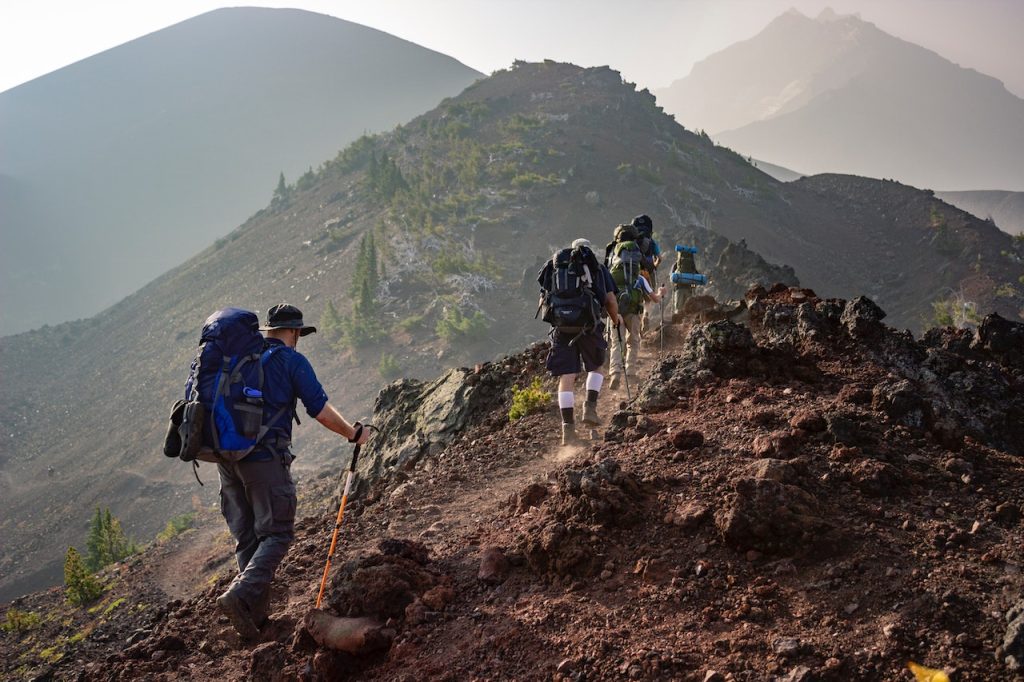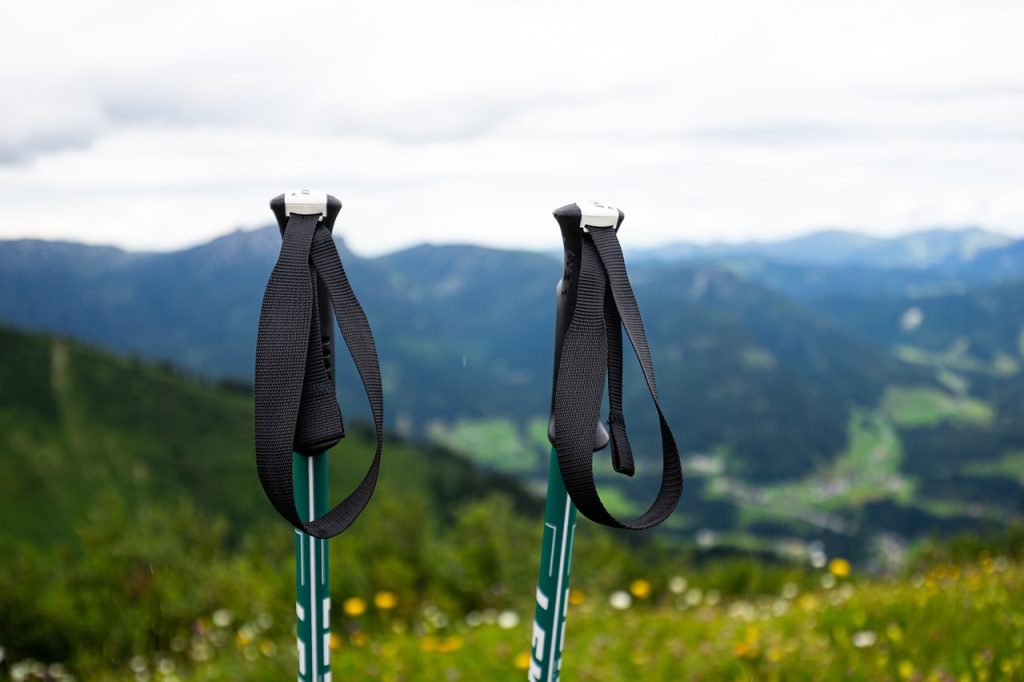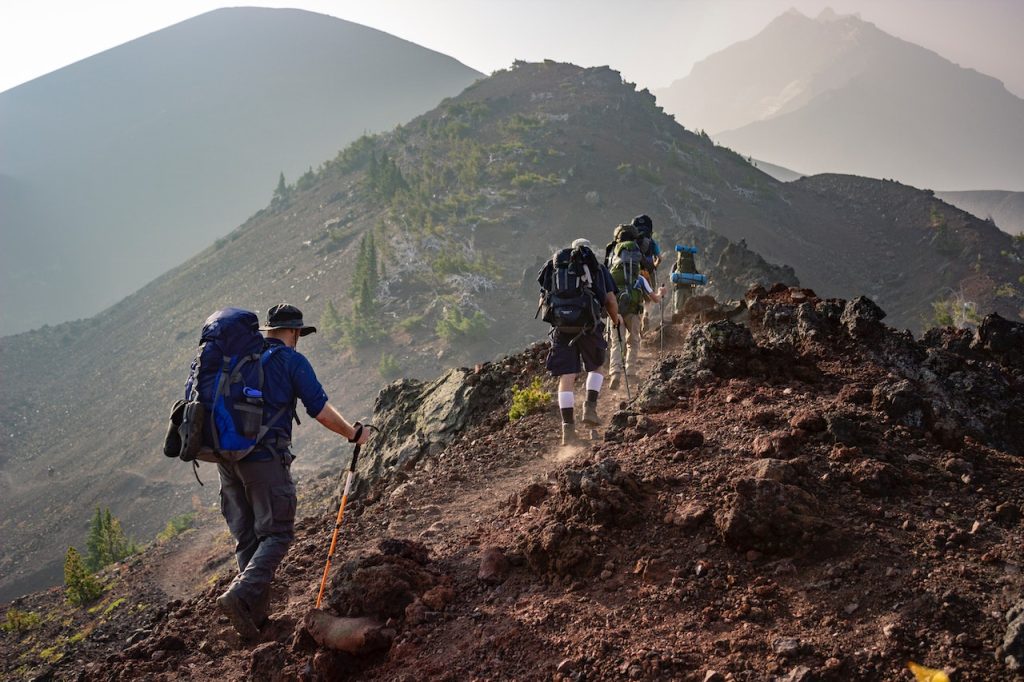Want to take your hiking adventures to the next level? We’ve got you covered if you’re looking for ways to navigate even the most challenging terrain easily. Look no further than hiking poles! These incredible tools offer many benefits, from reducing the impact on your joints to increasing your stability on steep or uneven ground. However, it’s important to note that using hiking poles correctly is crucial for achieving these benefits. In this guide, we’ll explore the proper technique for using hiking poles and how to maximize their potential to elevate your hiking game. So grab your poles, and let’s hit the trails!
Why Use Hiking Poles
Table of Contents
ToggleHiking poles are a great tool to take with you on any outdoor adventure. They offer numerous benefits that can make your hiking experience more comfortable and enjoyable.
Firstly, they help to distribute the weight of your backpack more evenly, reducing the strain on your back and legs. This can help you to hike longer without feeling as tired.
In addition, hiking poles also provide additional stability, which can help prevent slips and falls, especially on tricky terrains such as loose rocks or steep inclines. They can also help to reduce the impact on your joints, particularly your knees, which can be especially helpful during downhill sections.
Using hiking poles can also provide an upper body workout, engaging your arms, shoulders, and core muscles as you walk. This can help improve your fitness and stamina, making tackling more challenging hikes easier.
Overall, hiking poles are versatile and valuable accessories for your hiking gear collection. Their benefits can help you hike more confidently, comfortably, and easily.

Choosing the Right Hiking Poles
Do you want to buy a new pair of hiking poles? No matter where you are on your hiking journey – whether you’re a seasoned pro or just starting out finding suitable poles can make all the difference in your comfort and stability.
Here are a few key factors to keep in mind when choosing hiking poles:
Factors to Consider When Choosing Hiking Poles:
- Weight: The weight of your hiking poles can significantly impact your overall comfort and endurance on the trail. Lightweight poles are great for speed and agility, while heavier poles offer more stability and support.
- Adjustability: Many hiking poles are adjustable, meaning you can tweak the length or angle of the pole to fit your body and hiking style better. Look for poles with adjustable wrist straps to ensure a comfortable and secure fit.
- Material: They can be made from various materials, each with pros and cons. Aluminum poles are sturdy and affordable, while carbon fiber poles are lightweight but can be more expensive. Hybrid poles, which combine the best of both worlds, are also available.
- Grip and Tip: The grip and tip of your hiking poles can affect your comfort and traction on the trail. Look for poles with ergonomic grips that feel comfortable in your hand, and check to see that the tips are suited to the terrain you’ll be hiking on (e.g., rubber tips for pavement and carbide tips for rough terrain).
How to Determine the Correct Height for Your Hiking Poles:
- Start by getting up straight with your arms at your sides, then bend your elbow at a 90-degree angle.
- Adjust your pole to the height where the grip sits comfortably in your hand at this angle.
- You may need to experiment with different lengths to find the suitable pair for your body and hiking style.
- Keep in mind that your poles may need to be adjusted for different types of terrain or inclines.
You’ll enjoy greater trail comfort, stability, and endurance by considering these factors and finding suitable hiking poles. So what are you waiting for? Get out there and start exploring!
Basic Techniques for Using Hiking Poles

Proper Grip and Hand Placement:
One of the most important aspects of hiking poles is mastering the proper grip and hand placement. Start by holding the pole with your thumb on the strap and your fingers curled around the grip. Ensure the belt is snug but not too tight, as this will help you maintain a secure grip without causing undue strain on your wrists.
Keep your hands relaxed and fluid as you walk, allowing the pole to move naturally with your stride. Don’t grip the pole too tightly, which can cause tension and fatigue in your hands and arms. Instead, aim for a comfortable but secure grip that allows you to always maintain control over the pole.
Basic Pole Placement and Stride Technique:
Regarding pole placement and stride technique, the key is maintaining a natural and fluid motion that works with your body’s natural rhythm. Start by planting your pole before taking a step, then push off with your opposite foot to prop yourself forward. Keep your elbows curved or bent at a 90-degree angle as you move, allowing the poles to move freely with your stride.
When hiking uphill, use your poles to help you gain leverage and maintain your balance. Plant your pole slightly ahead and push down on the grip to help propel yourself upward. Use your poles to help control your speed and maintain your balance on downhill terrain. Plant your pole slightly behind you and push down on the grip to help slow your descent.
Correct Pole Placement for Uphill and Downhill Terrain:
It’s important to master the proper pole placement to get the most out of your hiking poles on uphill and downhill terrain. When hiking uphill, plant your poles slightly ahead of you and use them to gain leverage and propel yourself forward. Keep your stride short and controlled, using your poles to help you maintain your balance and prevent slipping.
On downhill terrain, plant your poles slightly behind you and use them to help control your speed and maintain your balance. Take shorter, controlled steps and use your bars to help absorb the impact of each footfall. By mastering the proper pole placement for different types of terrain, you’ll be able to move more efficiently and comfortably on the trail.
Advanced Techniques for Using Hiking Poles
Techniques for Using Hiking Poles to Improve Balance and Stability:
They can be a valuable tool for improving your balance and stability on the trail. One technique for using them to improve balance is the “three-point contact” technique. This involves always maintaining three contact points with the ground: your two feet and one hiking pole. By using your pole as an additional point of contact, you’ll be able to maintain better balance on uneven or slippery terrain.
Another technique for improving balance and stability with them is the “crossing technique.” This involves crossing your poles in front of your body, with each pole landing on the opposite side of your body. This technique can help you maintain stability on steep or rocky terrain, allowing you to brace yourself against the ground with both poles.
Techniques for Using Hiking Poles to Reduce the Impact on Joints:
One of the critical benefits of hiking poles is their ability to reduce the impact on your joints, mainly your knees and ankles. It’s important to use your poles properly to maximize this benefit. One technique for reducing the effect is the “shock absorption” technique. This involves using your poles to absorb the impact of each step rather than allowing your joints to absorb the shock. To do this, plant your pole slightly ahead of your foot and press down on the grip as you step down, allowing the pole to absorb the impact.
Another technique for reducing impact is the “double pole plant” technique. This involves planting both poles simultaneously and leaning on them slightly as you step forward. This technique can reduce the impact on your joints by distributing your weight evenly across your body.
Tips for Using Hiking Poles on Different Types of Terrain:
Different types of terrain require other techniques for using them effectively. On flat terrain, use your poles to help maintain a steady rhythm and to keep your arms and upper body engaged. Plant your poles slightly behind you and push off with each step to help propel yourself forward.
Use your poles to help gain leverage and maintain your balance on uphill terrain. Plant your pole slightly ahead of you and use it to push yourself upward as you step up. Use your sticks to help control your speed and maintain your balance on downhill terrain. Plant your pole slightly behind you and use it to help slow your descent.
Use your poles to help maintain your balance and stability on rocky or uneven terrain. Use the “three-point contact” technique to maintain better contact with the ground and to help prevent slips and falls.
Finally, on steep or technical terrain, use your poles to help you maintain your balance and to provide additional points of contact with the ground. Use the “crossing technique” to brace yourself against the ground and maintain stability.
Maintaining Your Hiking Poles

How to Properly Clean and Store Your Hiking Poles:
It’s important to clean and store them after each use properly to keep them in good condition. Start by wiping down your poles with a damp cloth to remove dirt or debris. Use a mild soap or cleaning solution to remove stubborn stains if they are dirty.
Once your poles are clean, ensure they’re completely dry before storing them. Store your poles in a cool, dry place away from direct sunlight or heat sources. If your poles are adjustable, collapse them entirely before storing them to prevent damage to the locking mechanisms.
How to Check for Damage or Wear and Tear:
Regularly checking them for damage or wear and tear is important to ensure they’re safe to use on the trail. Start by inspecting the tips of your poles for any signs of damage or wear. If the tips are worn down or damaged, they may need to be replaced.
Next, check the locking mechanisms on adjustable poles to ensure they function properly. If the mechanisms are loose or don’t hold the poles in place, they may need to be repaired or replaced.
Finally, inspect the shafts of your poles for any cracks or dents. If you notice any damage, replacing your poles to ensure your safety on the trail is best.
When to Replace Your Hiking Poles:
Even with proper maintenance, they will eventually need to be replaced. Signs that it’s time to replace them include:
- Significant wear and tear on the tips.
- Locking mechanisms that no longer function properly.
- Shafts that are cracked or damaged.
If you need clarification on whether it’s time to replace your poles, a good rule is to replace them every 500 miles or so of use. Additionally, if you notice a significant change in the weight or feel of your poles, consider replacing them.
Remember, using worn or damaged hiking poles can be dangerous and increase your risk of injury on the trail. Investing in a new set of poles when it’s time is a small price to pay for the peace of mind and safety they provide.
FAQs
Should I use poles when hiking?
Yes, it is recommended to use poles when hiking as they provide additional support and stability, reduce the impact on joints, and can help to increase endurance and balance.
What are the disadvantages of walking poles?
Some potential disadvantages of using walking poles while hiking include the additional weight and bulk to carry, the need to adjust the length of the poles for different terrains, and the possibility of getting tangled in vegetation or tripping on the poles. Additionally, some hikers may prefer something other than poles and may find them uncomfortable or unnecessary.
What is the difference between trekking poles and hiking poles?
Trekking and hiking poles are essentially the same and can be used interchangeably. However, trekking poles are often associated with more rugged, off-trail hiking or backpacking, while hiking poles may be more commonly used for day hikes or on established trails. The terminology can vary depending on the region or manufacturer.
Is it better to hike with one pole or two?
Using one pole versus two while hiking can be a matter of personal preference and the terrain being hiked. However, using two poles can provide more stability and balance, particularly on uneven terrain or when carrying a heavy backpack. Two poles can also help to distribute the load evenly across the body.
Conclusion
Hiking poles are a valuable tool for enhancing your hiking experience. They provide support and stability, reduce joint impact, and increase endurance. However, practicing and perfecting your technique is essential to get the most out of your poles. This includes mastering proper grip and hand placement, basic pole placement and stride technique, and correct pole placement for uphill and downhill terrain.
Advanced techniques include using your poles to improve balance and stability, especially on challenging terrain. Additionally, you can use your poles to reduce the impact on your joints, making your hiking experience more comfortable and enjoyable.
So grab your hiking poles, and hit the trail with confidence!
You Might Also Like….




